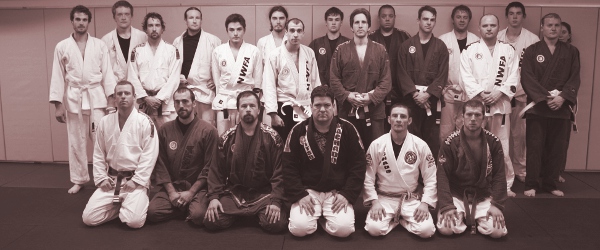Every form of martial arts is different, and each one offers something that makes it different. What makes Brazilian jiu-jitsu different from other marital arts? For one, it’s a grappling based martial art, which isn’t very “traditional” compared to other forms of marital arts. Perhaps the most similar marital art to BJJ is judo, but judo is more designed for competition than it is for self-defense situations.

What Makes Brazilian Jiu-Jitsu Different From Other Martial Arts?
Unlike most forms of martial arts, jiu-jitsu can be trained with a kimono or without one. Often referred as “gi or no gi”, each way of training carries a subset of complexities that can take years to master. In general, jiu-jitsu with the gi is better for developing a stronger technical foundation as a grappler, while jiu-jitsu without the gi is better for helping grapplers who are good scramblers, and who like constant movement and action.
Jiu-Jitsu is Different because it focuses ONLY on Ground Work
Jiu-jitsu isn’t about who can throw the strongest punch or kick – it’s about who can stop one. Since most fights end up on the ground anyway, jiu-jitsu is the martial art that wants to ensure that the defender (you) has the best possible chance of winning a fight once it goes to the ground.
Because of this, BJJ teaches a wide variety of techniques, submissions, and sweeps that are designed to put you in a dominant position while on the ground. Other forms of marital art, like karate, boxing, and even kick boxing, all focus on the standup aspect of a fight, which is fine for most situations. However, if you want to become a better-rounded fighter, it’s imperative that you learn how to attack and defend while on the ground.
Jiu Jitsu Technique: Choke from cross body, B Variation with Professor Jeff Patterson
Click Here to See Other Martial Arts Videos
Jiu-Jitsu Has the Longest Transition-to-Black-Belt Period
Compared to other forms of martial arts, jiu-jitsu is arguably one of the hardest to achieve a black belt in. Since competitors can’t even get their blue belt until they’re 16, it means that one can’t become a black belt until after they are 21 years old. Granted, there are exceptions to this, but the rule seems to be fairly universal across the world. On average, it takes between 10 and 12 years to get a black belt in jiu-jitsu. What makes Brazilian jiu-jitsu different from other martial arts? It’s grappling-based, involves a variety of submissions, and is perfect for handling self-defense situations on the ground.

What Makes Brazilian Jiu-Jitsu Different From Other Martial Arts?



